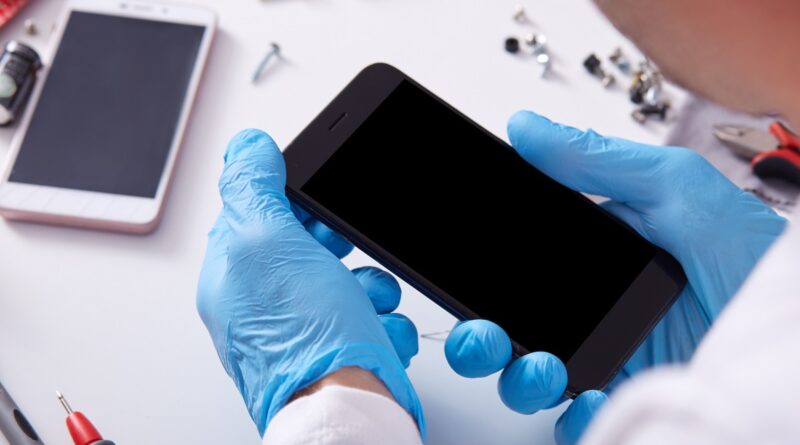The Essential Guide to iPhone Repair: Troubleshooting Tips and Expert Advice
Introduction
Owning an iPhone comes with the assurance of cutting-edge technology and seamless performance. However, like any electronic device, iPhones are not immune to issues and malfunctions. That’s why understanding iPhone repair and troubleshooting is crucial for users. In this comprehensive guide, we will provide you with essential tips and expert advice on troubleshooting common iPhone problems, whether you prefer DIY repairs or seek professional assistance.
Common iPhone Issues and Troubleshooting Steps
iPhones can experience a range of issues that impact performance and usability. From unresponsive screens and battery drain to connectivity problems, it’s essential to know how to troubleshoot these common issues. When encountering a problem, start by restarting your device, as this can resolve many temporary glitches. If the issue persists, proceed with step-by-step troubleshooting tips tailored to each specific problem. For example, for battery drain, disabling background app refresh and optimizing settings can help conserve battery life. Checking for software updates is also crucial, as Apple frequently releases updates to address known issues and improve stability.
DIY iPhone Repair: Tools and Techniques
While some iPhone repairs require professional expertise, there are certain repairs that you can tackle on your own. Before attempting DIY repairs, it’s important to understand the limitations and risks involved. Gather the necessary tools, such as screwdrivers, pry tools, and adhesive materials, before starting any repair. Common DIY repairs include battery replacement, screen replacement, and camera module repair. Follow step-by-step instructions provided by reliable sources, such as official Apple support articles or reputable online tutorials. Exercise caution, follow safety guidelines, and be mindful of the potential impact on warranty coverage.
Choosing Professional iPhone Repair Services
When facing complex issues or if you’re not comfortable with DIY repairs, seeking professional assistance is the wisest choice. Professional repair services offer expertise, specialized equipment, and access to genuine Apple parts. When selecting a repair service, prioritize reputable providers with certifications and positive customer reviews. Verify their use of authentic parts, as counterfeit or low-quality components can compromise performance and durability. Additionally, inquire about warranty policies, turnaround times, and customer support to ensure a satisfactory repair experience.
Cost Considerations and Options
The cost of iPhone repair varies depending on factors such as the model, type of repair needed, and warranty status. Apple Authorized Service Providers offer reliable repairs but tend to be more expensive than third-party repair shops. It’s essential to weigh the cost of repair against the potential benefits of upgrading to a new device. Consider factors such as the age of your iPhone, the extent of the damage, and your budget. Research pricing options, obtain quotes from multiple sources, and make an informed decision that aligns with your needs and priorities.
Preventive Maintenance and iPhone Care
Preventing issues before they arise is key to prolonging the lifespan and performance of your iPhone. Engage in regular preventive maintenance practices such as installing software updates promptly, managing storage to avoid clutter, and regularly backing up your data. Protect your iPhone with a high-quality case and consider applying a screen protector to prevent scratches and cracks. Avoid exposing your device to water, extreme temperatures, and other potential hazards. By implementing these care practices, you can minimize the risk of encountering common iPhone issues.
Expert Advice and Advanced Repairs
When facing complex problems such as logic board issues or water damage, it’s crucial to seek expert advice and assistance. Consulting with experienced technicians or Apple Support can provide valuable insights and guidance. Advanced repairs require specialized equipment and technical expertise beyond what the average user possesses. Attempting these repairs without the necessary knowledge and tools may lead to further damage. Professional repair services equipped to handle advanced repairs can diagnose the problem accurately and offer effective solutions.
Conclusion
In this essential guide to iPhone repair, we’ve explored troubleshooting tips and expert advice to help you navigate common iPhone issues. By understanding the steps to troubleshoot problems like unresponsive screens, battery drain, and connectivity issues, you can potentially resolve them on your own. DIY repairs can be an option for certain fixes, such as battery replacement or screen replacement, but it’s important to recognize the limits of your abilities and prioritize safety.
When DIY repairs aren’t feasible or you prefer professional assistance, choosing a reliable repair service is crucial. Reputable providers with certifications and positive reviews can ensure that your iPhone receives proper care. It’s also important to verify the use of genuine Apple parts to maintain the integrity and performance of your device.




